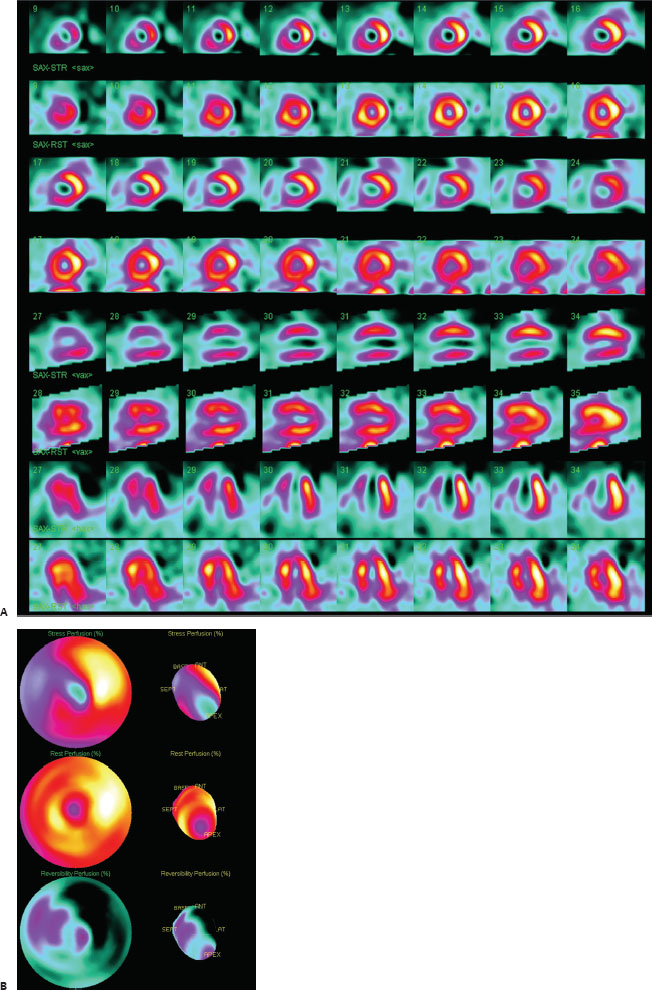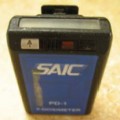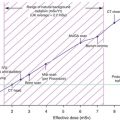
 Clinical Presentation
Clinical Presentation
A 64-year-old woman with chest pain on exertion.

(A) Rest and stress myocardial perfusion scintigraphy demonstrates a large, severe, almost completely reversible perfusion defect in the anteroseptal and apical segments (left anterior descending territory; arrow) with a moderate, completely reversible defect in the inferior wall (right coronary territory; rectangle). Additionally, increased right ventricular (RV) uptake (arrowhead) and an increase in left ventricular (LV) chamber size (“transient ischemic dilation”; circle) are seen at stress. (B) Rest and stress polar maps and surface renderings display the same nearly completely reversible abnormalities (arrows). A small apical perfusion defect persists at rest (circle).
 Differential Diagnosis
Differential Diagnosis
• Reversible ischemia in the left anterior descending (LAD) artery and right coronary artery (RCA) territories: Reversible perfusion defects indicate that this is the most likely diagnosis. (The small fixed apical component may represent a small superimposed infarct.)
• Shifting breast artifact: This can occasionally simulate reversible LAD artery disease. However, it would not affect the inferior wall.
• Diaphragmatic creep artifact: This can simulate reversible RCA disease. However, it would not affect the anterior wall. It is rarely encountered with current imaging protocols.
Stay updated, free articles. Join our Telegram channel

Full access? Get Clinical Tree






